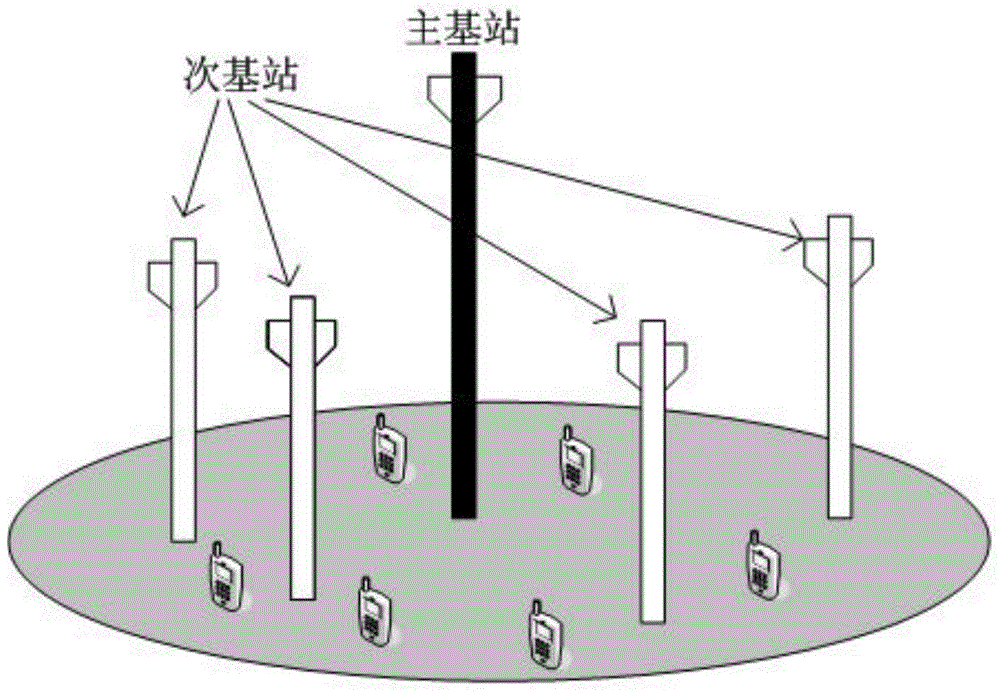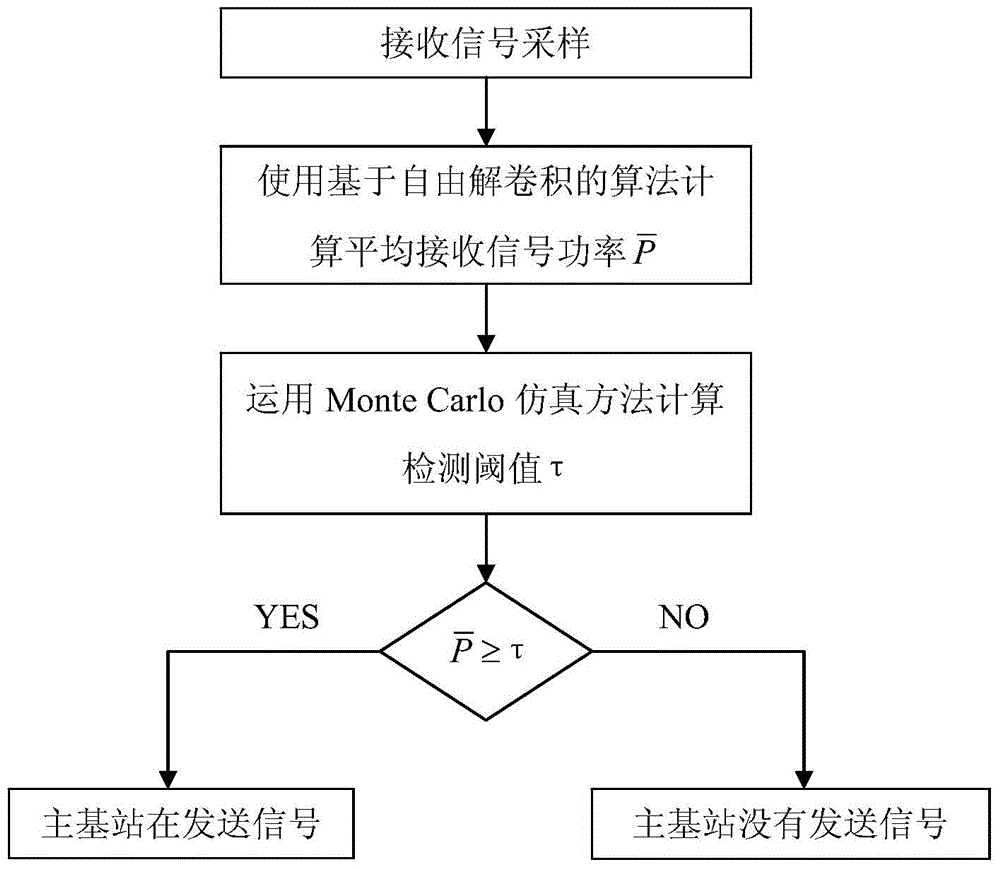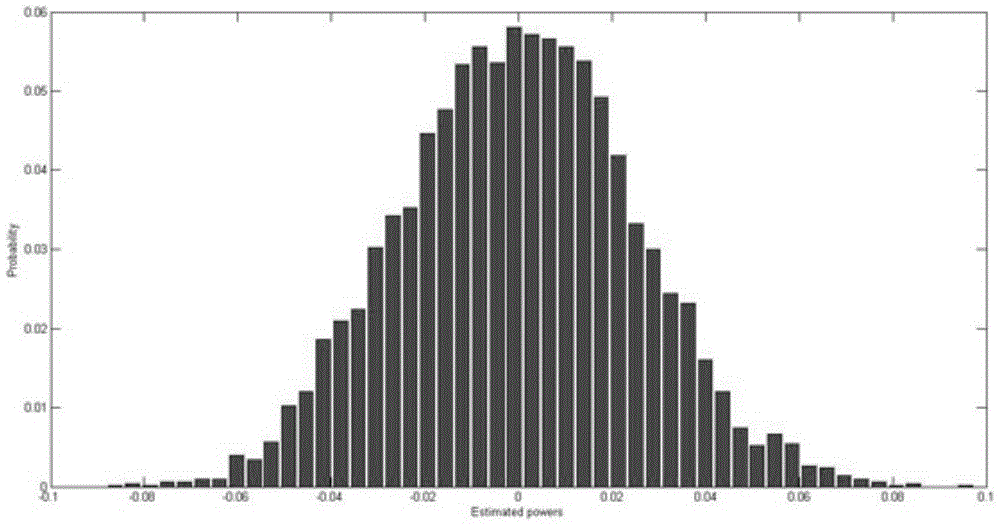A Cooperative Spectrum Sensing Method Based on Free Probability Theory
A technology of collaborative spectrum sensing and probability theory, applied in transmission monitoring, electrical components, transmission systems, etc., can solve the problem of low spectrum sensing performance and achieve the effect of improving spectrum sensing performance and low signal-to-noise ratio
- Summary
- Abstract
- Description
- Claims
- Application Information
AI Technical Summary
Problems solved by technology
Method used
Image
Examples
Embodiment 1
[0038] Such as figure 1 As shown, K secondary base stations BS distributed in different geographical locations 1 ,BS 2 ,...,BS K Cooperate to sense the channel, and judge whether the main base station is sending a signal. The primary base station and each secondary base station are equipped with N t and N r antennas with a MIMO Rayleigh fading channel between them. When the main base station sends a signal, the sampling rate is 1 / T s , then the sampling signal output by the kth receiver at time n can be expressed as
[0039]
[0040] in, is the transmitted symbol vector at time n, whose elements satisfy the zero-mean independent and identical distribution, and the variance is 1; is the MIMO channel matrix between the transmitter and the kth receiver, and its elements are complex Gaussian variables with mean 0 and variance 1, that is, obey N c (0,1);P k is the received signal power of each antenna of the kth receiver; is the complex Gaussian noise vector at the...
Embodiment 2
[0132] Such as figure 2 As shown, the present invention provides a cooperative spectrum sensing method based on free probability theory, which is suitable for MIMO communication environments, and specifically includes the following steps:
[0133] Step 1: Sampling the received signals of multiple antennas of each secondary base station, and the sampled signals will be processed centrally;
[0134] Step 2: According to the noise variance of all received sampling signals and channels, with the help of the asymptotic free characteristics of the random matrix and the Wishart distribution characteristics, the algorithm based on free deconvolution is used to solve the average received signal power of all receiving antennas That is, the detection statistic;
[0135] Step 3: According to the target false alarm probability p f , using Monte Carlo simulation to calculate the detection threshold τ in the presence of noise only;
[0136] Step 4: Put Compared with τ, it is judged wh...
PUM
 Login to View More
Login to View More Abstract
Description
Claims
Application Information
 Login to View More
Login to View More - R&D
- Intellectual Property
- Life Sciences
- Materials
- Tech Scout
- Unparalleled Data Quality
- Higher Quality Content
- 60% Fewer Hallucinations
Browse by: Latest US Patents, China's latest patents, Technical Efficacy Thesaurus, Application Domain, Technology Topic, Popular Technical Reports.
© 2025 PatSnap. All rights reserved.Legal|Privacy policy|Modern Slavery Act Transparency Statement|Sitemap|About US| Contact US: help@patsnap.com



